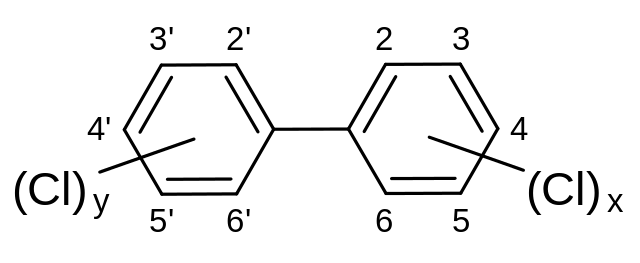ULTRATrace PCB Analysis
For over 20 years PRL has been analyzing for polychlorinated biphenyls (PCB) using high resolution mass spectrometers (HRMS). We are able to detect PCBs at ultratrace levels in a range of product types including water, sediment, food, pharmaceuticals, and more!
What are pcbs?
PCBs are synthetic organic chemicals that have been associated with a variety of harmful effects to people and the environment. They were originally used as coolants and lubricators in transformers and other electrical equipment. PCBs were manufactured in North America until the mid-70’s. 50-percent of worldwide production at that time was in North America. Add to that the fact that 50-percent of foreign PCB production was imported into North America, and you see how prevalent these toxins are on this continent.
Although production ceased, many people mistakenly believe that PCBs are limited to being a legacy problem. PCBs continue to be unintentionally manufactured in present day industries, but just in smaller, less noticeable amounts. Trace amounts are often allowed to be in a wide variety of products including printing inks, organic dyes (especially the colors yellow and green), industrial and residential caulking.
PCBs are comprised of 209 individual congeners. Of these 209, the World Health Organization has identified 12 that have similar toxic properties to dioxins and are called dioxin-like PCBs. They are a concern because of their potential to cause Cancer.
The WHO has assigned toxic equivalency factors for the 12 dioxin-like PCB’s
Why is testing for pcbs important?
PCBs have been listed as a probable carcinogen by the Environmental Protection Agency. Health studies have associated PCBs with such problems as thyroid disorders, liver abnormalities, developmental problems, cardiovascular disease, and skin lesions. PCBs can accumulate in the bodies of animals such as fish, and then are passed on through the food chain. Once in the human body, PCBs may remain there for years, stored in the fat and liver
Testing for all 209 PCBs at ULTRAtrace levels
Pacific Rim Laboratories tests for all 209 congeners using EPA 1668c as a reference method.
Whether you are only looking for the dioxin-like PCBs, all 209 congeners, or somewhere in between, the PRL team will customize our reports to suit your needs!
Contact us today to get started on your testing journey!

